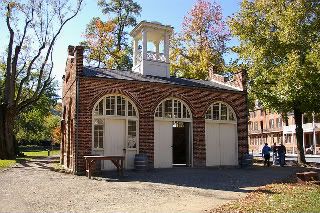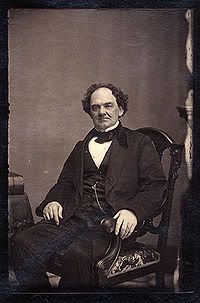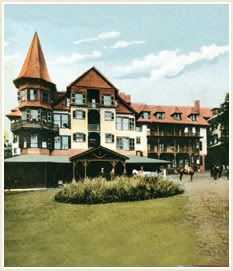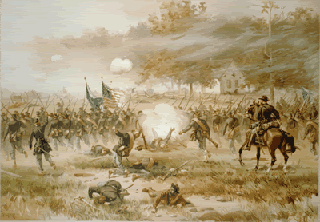
John Brown's Fort photograph by Joy Schoenberger
Harpers Ferry is a well-known town of 300 souls located in Jefferson County, West Virginia. It's situated at the confluence of the Potomac and Shenandoah rivers where the states of Maryland, Virginia and West Virginia meet.
It's famous for John Brown's raid, and indeed has a spook or two left over from that day, but its haunted history begins, well, at its beginning.
In 1750, town namesake Robert Harper was given a grant for 125 acres at the present location of the town. In 1761, he established a ferry across the Potomac, making the town a starting point for settlers moving into the Shenandoah Valley and westward bound.
He and his bride, Rachel, began building the Harper House, today the oldest surviving structure in Harpers Ferry and operated by the National Park Service.
Now ol' Bob made quite a haul ferrying folk back and forth, but he had a problem figuring out where he could safely stash his gold. He went to a tried and true method to safeguard his wealth - Harper instructed Rachel to bury all of their gold and not breath a word about its location.
Harper wasn't in great health, and passed over to the other side. Rachel met with a sudden, accidental death while completing work on the House, and guess what: no one knew where the Harper fortune was.
Starting in the 1800s, it was claimed that the Harper House was haunted. Hey, it still has that rep today. Visitors report that they've seen an old woman dressed in 18th century finery staring from an upper-floor window, fixated on the old Harper Garden. It's said to be Rachel, still watching over the family strongbox through the decades.
In 1798, soldiers were stationed just above Harpers Ferry, positioned there during a cold war tiff with the French. As it never developed into a shooting war, the bored troopers would parade nightly through the town, led by a fife and drum corp.
Still, many of them died there, victims of a cholera epidemic, and are buried at nearby Camp Hill. And if you listen closely, it's said that one can hear them parading down the street to this day, marching to the music of fifes and drums.
The next spirit to roam the area is that of Jenny, a famed apparition among West Virginia's railroaders. In the 1830s, Jenny, who lived near the tracks, brushed too close to the hearth in her house, and caught her dress afire.
Panicked, she ran into the night to try to put out the fire, but in her blind rush, Jenny dashed right in front of an oncoming train. The engine snuffed out the fire; it also snuffed out Jenny.
Her ghost still haunts the old Armory Yards. Sometimes in the night, one can hear train whistles blow and the screech of brakes pressing against the tracks. Engineers swear that they saw a flaming figure and felt a bump when they reached her, but when they check, no one's there. It's just Jenny, reliving her past.
Now we get to John Brown. Some tales say that he still spooks the area with his black dog, walking down the street. In fact, he even agreed to be photographed by people that believed he was a reenactor. But when they developed the film, his image was gone.
But maybe the best known phantom is one of the slaves who accompanied him on the raid, Dangerfield Newby. He was killed by the locals when a shot struck him in the neck. His body was mutilated, and then left in an alley for the pigs to feast upon.
To this day that lane bears the name of "Hog Alley." And he's still in town. It's claimed that a middle-aged black man with a slouch hat and a jagged scar across his throat still walks the streets of Harper Ferry; it's thought to be the shadow of Newby.
The Civil War was quite traumatic for Harpers Ferry (it was part of Virginia until the war's end), which was captured and recaptured eight times between 1861 and 1865.
Because of the town's strategic location on the railroad and at the northern end of the Shenandoah Valley, both Union and Confederate troops moved through the burg frequently, and the battle of Harpers Ferry was fought from September 13-15, 1862, a prelude to Antietam.
And that's how St. Peter's Catholic Church got to join the list of haunted locales in Harpers Ferry. St Peters was the only church in Harpers Ferry to survive the Civil War in one piece (it was said that the pastor would raise a British Union Jack over the holy house during combat to indicate neutrality; he's probably lucky both sides didn't use it for target practice), and often served as a hospital.
One of the soldiers being treated there was said to have muttered "Thank God, I'm saved," as the docs looked him over. He was wrong, at least in the corporal sense; he died. Now people report that some nights they will see a golden aura glow near the church doors and hear a weak voice whispering, "Thank God I'm saved."
The other apparitions aren't war-related; no one seems to know what their cause may be. One is the vision of a priest, so realistic that church visitors speak to him. The padre walks from the rectory without a word, and then passes through the walls of the church.
Another eerie occurrence is the sound of a baby crying, which can be heard on the front steps. Again, there's no historical reference for this event.
While not exactly ghostly, it's been reported that one can catch sight of an orange glow in the night skies from Maryland Heights. That scene is said to be a replay of the final act of a hungry troop of young Civil War soldiers. They were unable to light a fire to cook their evening meal, and decided to prime the flames with an artillery shell, blowing themselves and their chow to high heaven.
Another area to keep a paranormal eye on is the "Haunted Cottage," a home that John Wilkes Booth rented in 1859 when he attended John Brown's hanging. It's on its way to becoming a ghost museum, and so far has just been the object of electronic glitches, often a sign of spooky activity - or bad wiring.
(The stories are taken in the main from "A Ghostly Tour of Harpers Ferry" by Shirley Dougherty and are part of Harper Ferry's ghost tour.)



